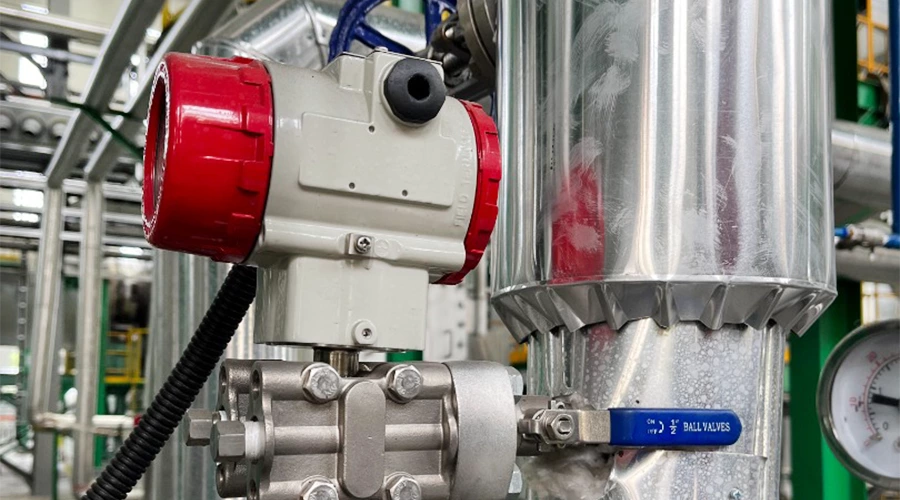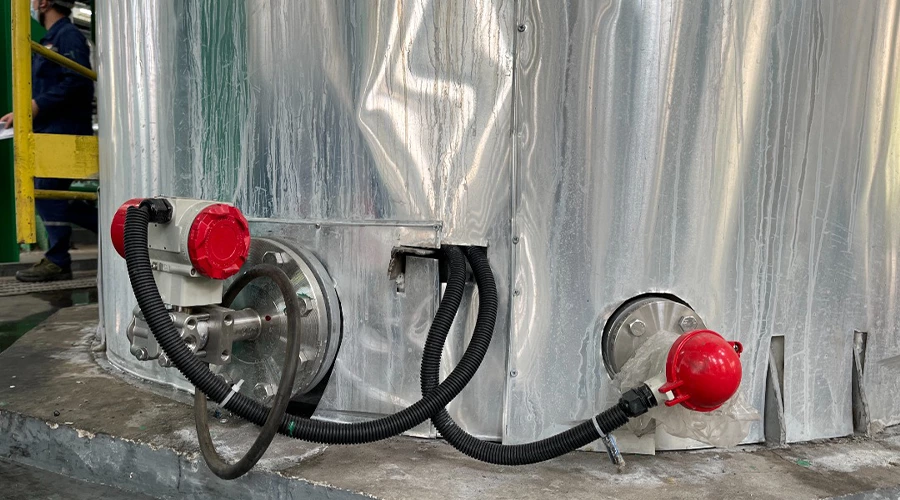Differential Pressure Transmitter - Everything You Need to Know
Introduction
In various industrial applications, the measurement and control of pressure play a crucial role. One essential instrument used for this purpose is the differential pressure transmitter. This article will delve into the intricacies of differential pressure transmitters, exploring their working principles, components, applications, benefits, and more.
What is a Differential Pressure Transmitter?
A differential pressure transmitter is a device used to measure the difference in pressure between two points in a system. It consists of a sensor, which detects the pressure difference, and a transmitter, which converts the sensed pressure into an electrical signal. This signal can be utilized for monitoring, controlling, or transmitting the pressure data to other devices or systems.
Working Principle
The working principle of a differential pressure transmitter is based on the measurement of the pressure difference between two locations. It typically employs a diaphragm or a sensor that experiences the pressure variation. As the pressure changes, the diaphragm deforms, causing a change in electrical resistance, capacitance, or another physical property. This change is then converted into an output signal, such as a voltage or current, proportional to the pressure difference.
Components of a Differential Pressure Transmitter
A differential pressure transmitter comprises several key components. These include:
- Diaphragm: The diaphragm is the primary sensing element that converts pressure into mechanical deformation.
- Pressure Sensors: These sensors detect the deflection of the diaphragm and convert it into an electrical signal.
- Transmitter Electronics: The transmitter electronics receive the signal from the pressure sensors and amplify, condition, and convert it into an output signal.
- Housing: The housing encloses the sensitive components and protects them from external influences.
- Process Connections: These connections enable the transmitter to interface with the process or system under measurement.
Applications
Differential pressure transmitters find extensive applications across various industries. Some common areas where these transmitters are used include:
- HVAC systems for monitoring air and gas pressure
- Industrial processes for measuring flow rates, levels, and filter conditions
- Oil and gas industry for monitoring pipeline pressures and detecting leaks
- Pharmaceutical and biotechnology for precise pressure control in manufacturing processes
- Water treatment plants for monitoring water pressure and flow

Benefits and Advantages
The utilization of differential pressure transmitters offers several benefits, including:
- Accurate Measurements: These transmitters provide precise and reliable pressure measurements, ensuring optimal control of processes.
- Versatility: With a wide range of pressure ranges, materials, and configurations available, differential pressure transmitters can be adapted to various applications.
- Remote Monitoring: Transmitters can transmit pressure data to remote systems, enabling real-time monitoring and control.
- Cost Efficiency: By monitoring pressure differentials accurately, these transmitters help optimize energy consumption and reduce maintenance costs.
- Easy Integration: With standardized interfaces and communication protocols, differential pressure transmitters can be easily integrated into existing systems.
How to Choose a Differential Pressure Transmitter
When selecting a differential pressure transmitter, consider the following factors:
- Pressure Range: Ensure the transmitter's range covers the desired pressure differentials in your application.
- Accuracy: Look for transmitters with high accuracy specifications to ensure precise measurements.
- Environmental Conditions: Consider the temperature, humidity, and other environmental factors the transmitter will encounter.
- Output Signal: Choose a transmitter with an output signal compatible with your monitoring or control system.
- Material Compatibility: Confirm that the wetted materials of the transmitter are compatible with the process fluid.
Installation and Calibration
Proper installation and calibration are crucial for the accurate functioning of a differential pressure transmitter. Follow the manufacturer's guidelines and consider the following steps:
Mount the transmitter in a suitable location with proper orientation and alignment.
Ensure a secure and leak-free connection between the process and the transmitter.
Calibrate the transmitter using a calibrated pressure source and adjust it to the desired range.
Verify the zero and span points to eliminate any offset or non-linearity.
Document the calibration details for future reference.

Maintenance and Troubleshooting
To ensure optimal performance and longevity of a differential pressure transmitter, regular maintenance and troubleshooting are essential. Here are some tips:
Periodically check for leaks, blockages, or damage in the process connections or diaphragm.
Clean the diaphragm and pressure ports to prevent clogging or contamination.
Verify the electrical connections for secure contact and proper grounding.
Monitor the output signal and compare it with the expected values to detect any anomalies.
Consult the manufacturer's documentation or contact their support for troubleshooting assistance.
FAQs
FAQ 1: What is the purpose of a differential pressure transmitter?
A differential pressure transmitter is used to measure the pressure difference between two points in a system. It enables monitoring, control, and transmission of pressure data.
FAQ 2: How does a differential pressure transmitter work?
The transmitter senses the pressure difference using a diaphragm or sensor, which undergoes deformation based on the pressure change. The resulting mechanical movement is converted into an electrical signal proportional to the pressure difference.
FAQ 3: What are the key components of a differential pressure transmitter?
The key components of a differential pressure transmitter include the diaphragm, pressure sensors, transmitter electronics, housing, and process connections.
FAQ 4: How to select the right differential pressure transmitter for my application?
Consider factors such as pressure range, accuracy, environmental conditions, output signal compatibility, and material compatibility when choosing a differential pressure transmitter.
FAQ 5: What are some common issues with differential pressure transmitters?
Common issues include sensor drift, clogging or contamination of pressure ports, electrical connection problems, and calibration errors.
Conclusion
Differential pressure transmitters are vital instruments for accurately measuring and controlling pressure differences in various industrial applications. Their working principles, components, benefits, and installation procedures have been explored in this article. By selecting the right transmitter, performing proper installation and calibration, and ensuring regular maintenance, businesses can enhance their processes and achieve optimal performance.



